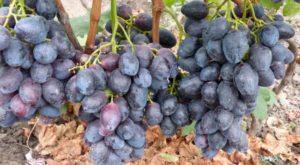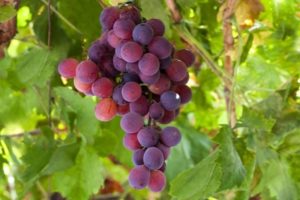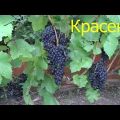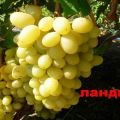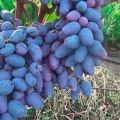Description and characteristics of the Baikonur grape variety, cultivation features and selection history
The gardeners got acquainted with the Baikonur grapes recently. The variety became available for purchase only in 2012. But its price frightened off: it greatly exceeded the cost of analogues. Today Baikonur occupies a worthy place in summer cottages. Gardeners appreciated its characteristics. Dark blue brushes delight with taste.
Breeding history
The variety was obtained by the amateur breeder Pavlovsky E.G. For work, he chose two popular grapes - Krasotka and Talisman. The result combines all the advantages of the original varieties.
Description of the variety
Any grower will recognize this species at first sight. It is unusual, it attracts attention. Description of the variety provided by the author:
- vigorous bush;
- the vine is strong, developed;
- the vine ripens in one season;
- grown as self-rooted or in the form of a scion;
- the leaf is bright green;
- the root system is highly developed;
- lack of peas (the berry does not shrink);
- early ripening variety (105-115 days from the awakening of the vine to picking berries);
- active growth of shoots (regular stripping is required);
- excellent rooting of cuttings (95%).
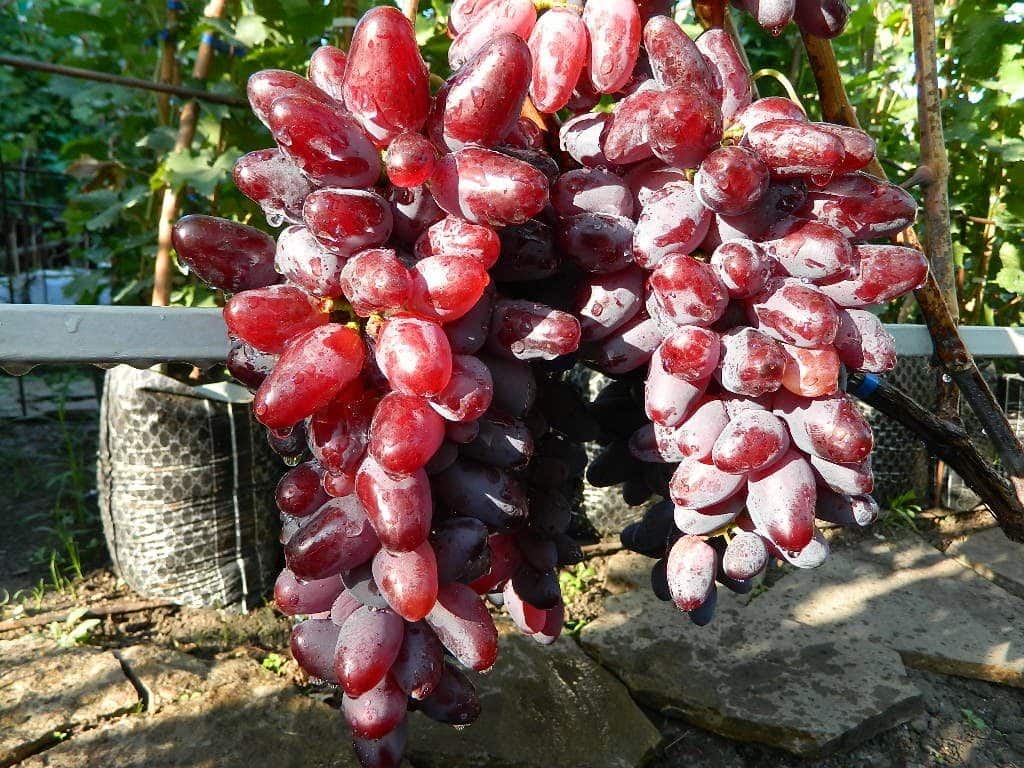
Baikonur is used by gardeners for making homemade wine and drinking it fresh. More complete data on the plant are not available: work is underway to study the parameters.
Characteristics of the variety
The characteristic of Baikonur grapes allows you to distinguish its berries at a glance:
- berries are oval-elongated;
- the mass of one reaches 18 g;
- berry length up to 40 mm;
- the brushes are loose, lush;
- brush weight 700 g;
- sugar content 20%;
- acidity 7% (practically disappears during storage);
- the pulp is watery;
- the taste of berries has a fruity tint;
- the skin is thin, dense;
- frost resistance up to -23 degrees Celsius.

The Baikonur variety has excellent marketability: the fruits remain attractive for 2-3 months after harvest. The grapes are easy to transport over long distances. This is convenient for gardeners who grow berries for sale.
Growing features
The attractiveness of the Baikonur variety is its unpretentiousness. But it has the peculiarities of growing.
Soil selection
Baikonur bears fruit intensively on loose, nutritious soils. Before boarding, it is recommended:
- check the acidity of the soil (a neutral, slightly alkaline or slightly acidic reaction is required);
- too acidic soils are recommended to be deoxidized (add lime, dolomite flour);
- clean the prepared area of weeds;
- heavy soils require sanding, sandy soils - clay;
- achieve the required soil structure: it must be loose, moisture and air permeable;
- assess the groundwater level (water should be no higher than 3-4 m).
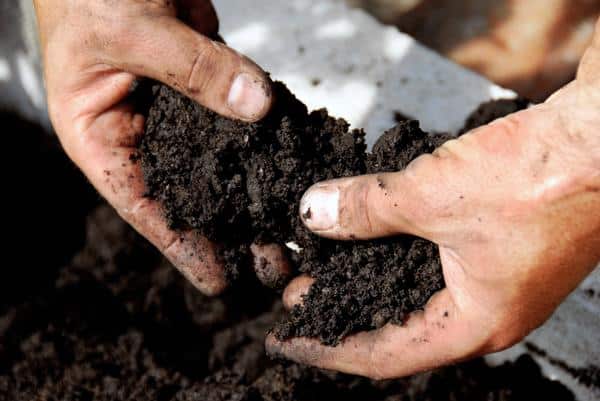
It is required to prepare a landing pit in advance. Its size: 70 cm x 70 cm x 70 cm. The soil is removed and folded neatly next to the pit. Drainage is poured down. Backfill thickness - 7-10 cm. Broken brick, expanded clay, pieces of paving slabs are suitable.
Then the soil is mixed with mature organic matter and mineral complex and returned to the place.
It is recommended to cook the pit in the spring with the planned autumn planting and in the fall - with the spring.
Landing
It is recommended to place Baikonur in a permanent place in early spring (after thawing the soil in March) or in mid-autumn (early October). For spring planting, the soil temperature should be 7-10 degrees Celsius. In autumn, it should be planted 2-3 weeks before the onset of a stable cold snap. During this time, the bush will have time to take root well.
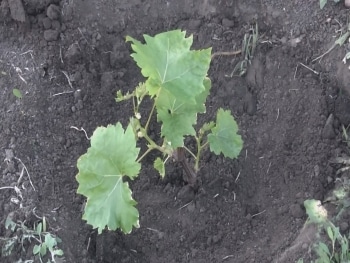
Planting a plant is required in a planting hole. It should be large enough to accommodate the root system. The hole must be spilled well with water. Pour a mound of earth at the bottom and place the roots around it. Add the soil gradually. Seal the near-barrel circle. The planting should be mulched.
Reproduction
Baikonur propagates by cuttings or grafting. Any variety is suitable for the stock, except for Rumba. For cuttings, a ripe vine (2 years of life) is chosen. The length of the appendage is 7-15 cm. The upper part of the cutting (just above the eye) is cut off and filled with wax or paraffin. The lower part is cut off at an angle of 45 degrees and dipped in any rooting stimulator.
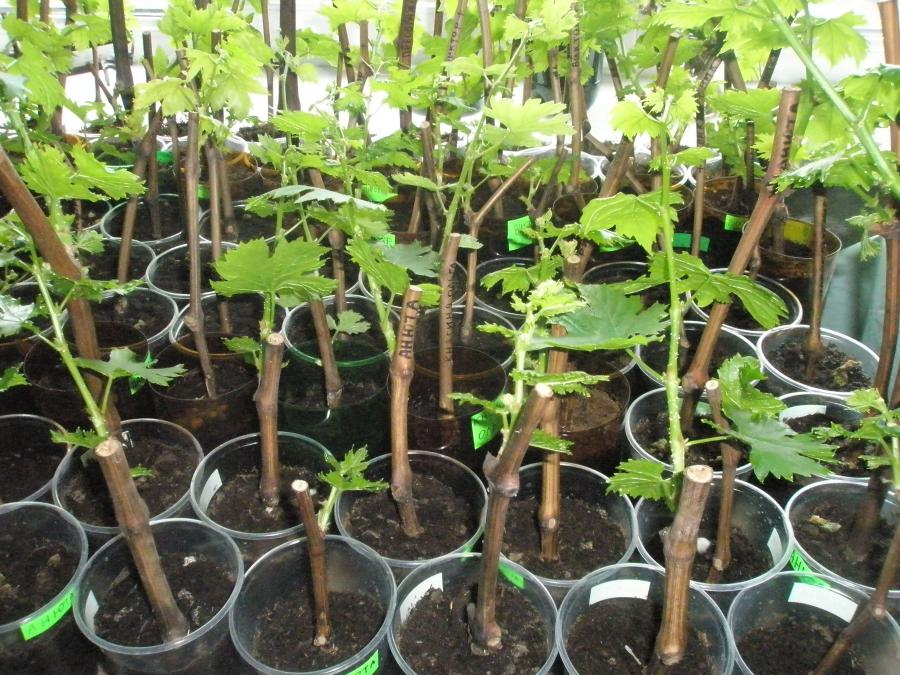
The stalk is stuck at an angle into the moistened soil and covered with a foil with holes for oxygen access. After 1-2 months, the vine will take root. Young grapes are ready to be planted in a permanent place.It is best to root Baikonur in early spring (early March): then the bush will have time to grow a good root system over the summer.
Care principle
The grapes need proper care. It is recommended to follow the advice of agronomists.
Watering and fertilizing
The Baikonur variety has a developed root system. It should only be moistened with prolonged drought. It is recommended to water rarely, but abundantly.
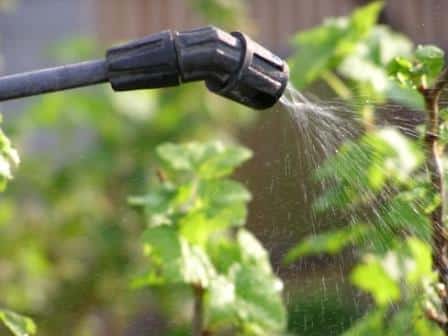
Grapes respond by increasing yields to the introduction of mineral and organic fertilizers. Mineral complexes are added to the soil in spring and autumn according to the instructions. Mature organic matter (humus, compost) - only in spring. Application rate - a bucket per plant.
Pruning
There are no data on the formative pruning of Baikonur. Gardeners are encouraged to use well-known schemes. Grapes require brightening pruning and trimming.
Advantages and disadvantages of the variety
Some gardeners call the Baikonur variety the best among the universal varieties. Its advantages:
- universal purpose of use;
- lack of pea;
- stable yield;
- frost resistance;
- high sugar content;
- unpretentiousness;
- early ripening;
- marketability;
- resistance to cracking;
- excellent transportability;
- resistance to major diseases.
But there is also a drawback: low frost resistance.
Pests and diseases
The Baikonur grape is resistant to mildew, oidium. The berries of the variety are not damaged by birds and insects (a dense skin rescues).
